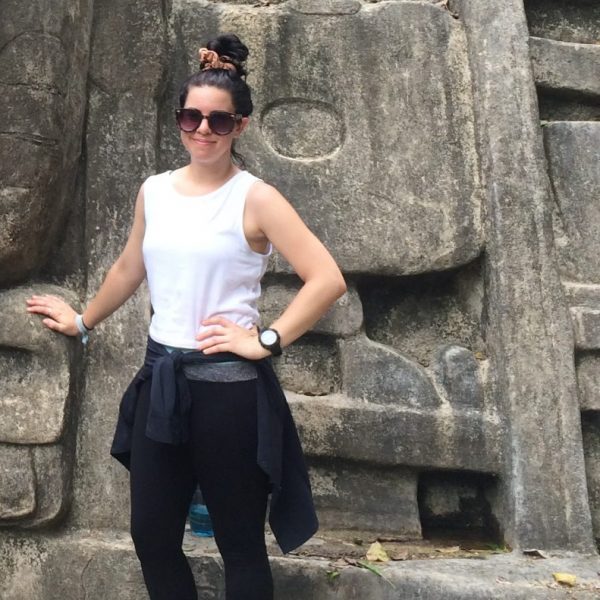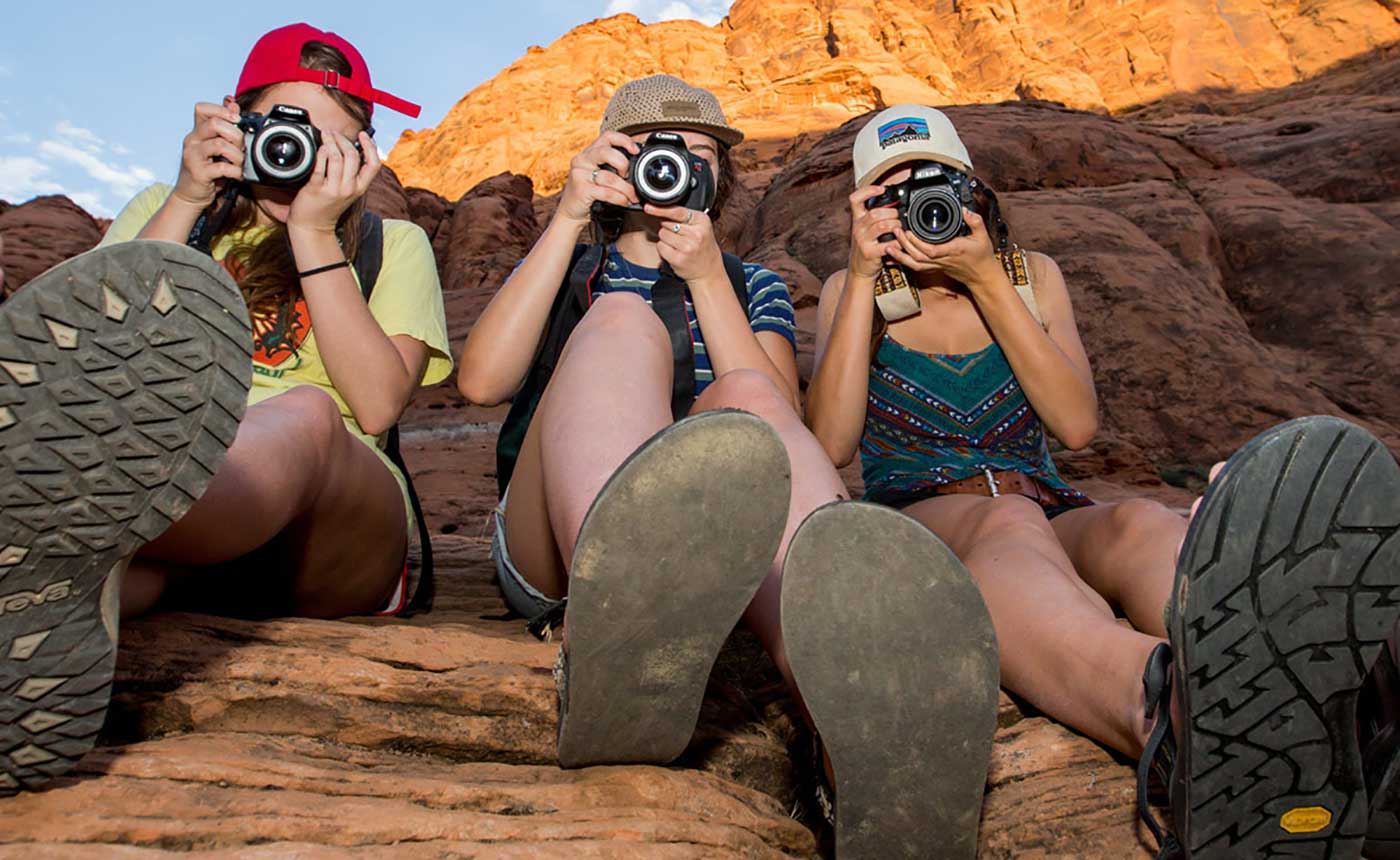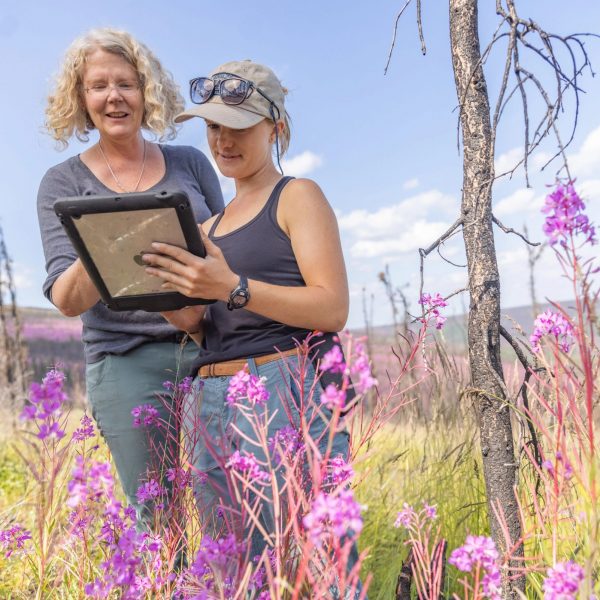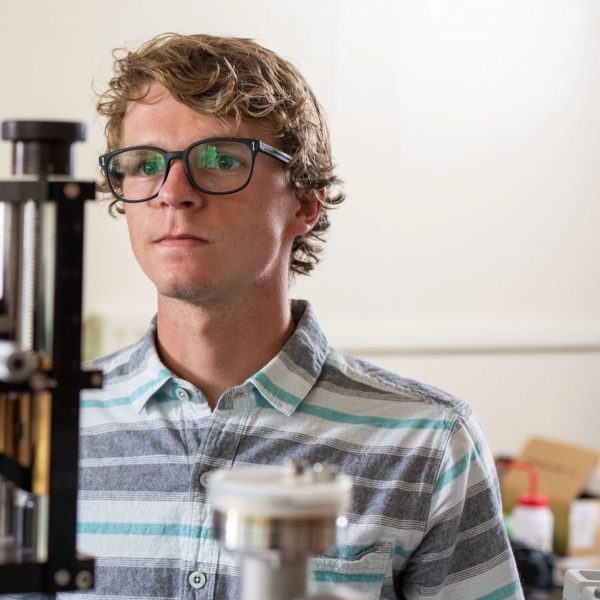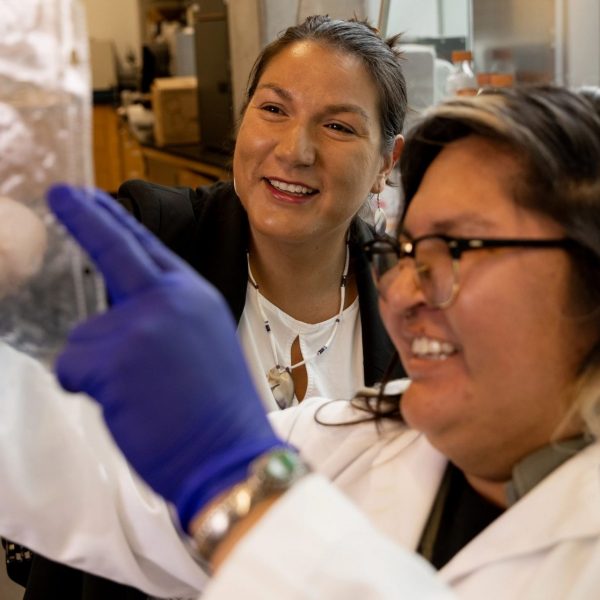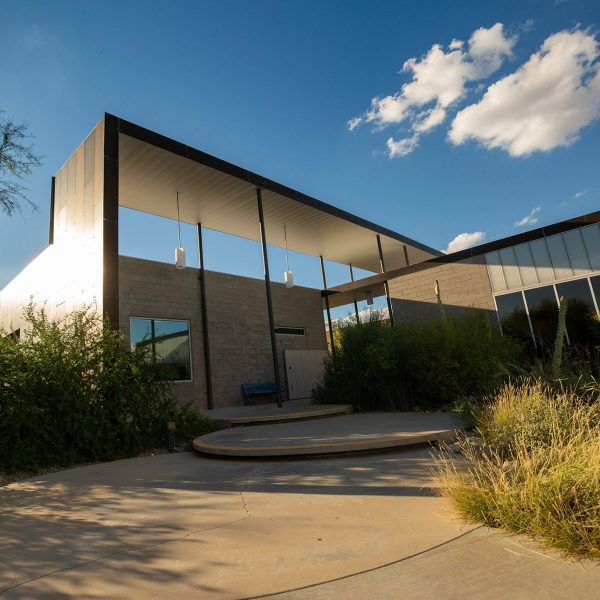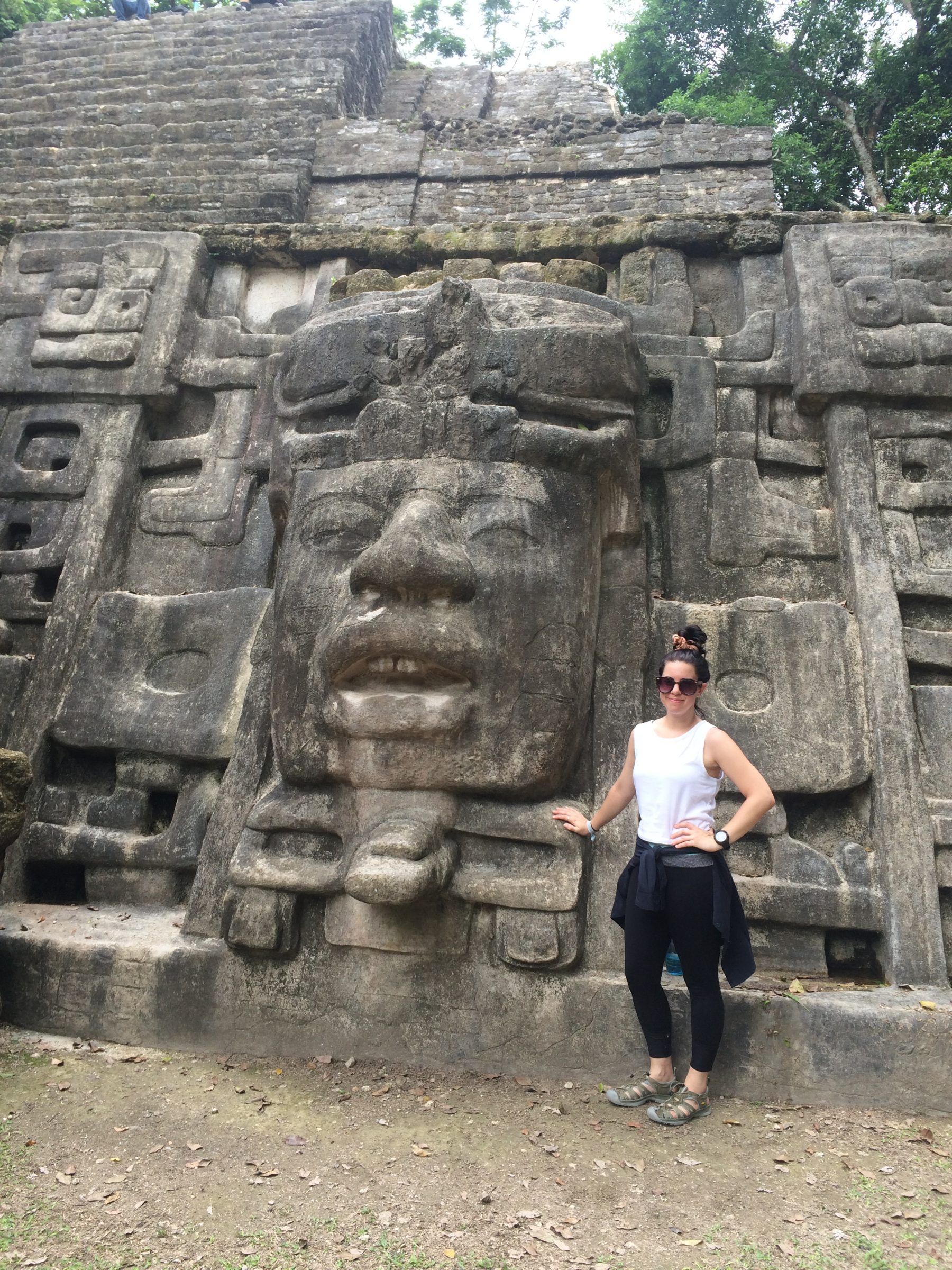
NAU alumna Tia Watkins conducts archaeological studies at Belize field sites to gain a deeper understanding of Mayan culture.
Watkins started working with Professor Jaime Awe and his Belize Valley Archaeological Reconnaissance (BVAR) project as she was completing her degree at NAU. She is currently pursuing a PhD at the University College London Institute of Archaeology.
Hometown: Thousand Oaks, California
NAU degree: BA in Anthropology with Archaeology emphasis, 2018
How did you choose NAU?
I went to Moorpark Community College in California with the intent to transfer to a four-year university. Dr. Andrew Kinkella, who was teaching most of the archaeology courses offered at the college, suggested I attend a field school in Belize to gain an immersive experience in the field. The project he recommended was the Belize Valley Archaeological Reconnaissance (BVAR) project, directed by Dr. Jaime Awe.
After spending two weeks excavating at the site of Baking Pot, an impressive Classic Maya ceremonial center, I knew that I wanted to continue working with the BVAR project throughout my professional career as an archaeologist.
When I returned home to finish my last year at Moorpark, Dr. Awe had just accepted a position at NAU. I knew it was an opportunity that shouldn’t be missed, so I transferred to NAU to continue working with Dr. Awe and finish my bachelor’s degree.
How did you connect with Dr. Awe, and what kind of an impact did he have on you and your academic journey?
I met Dr. Awe when I attended his archaeological field school in the summer of 2014, and that connection was transformative for me. I was invited to participate in the BVAR project again in the summer of 2015, just before starting the fall semester at NAU. During the 2015 field season, I expressed to Dr. Awe that I wanted to expand my experience by writing a small research proposal to supervise some minor excavations. Dr. Awe supported my proposal. Before starting my first semester at NAU, I had two in-field experiences, one as a field school student and one as a research student, all due to the support and encouragement of Dr. Awe.
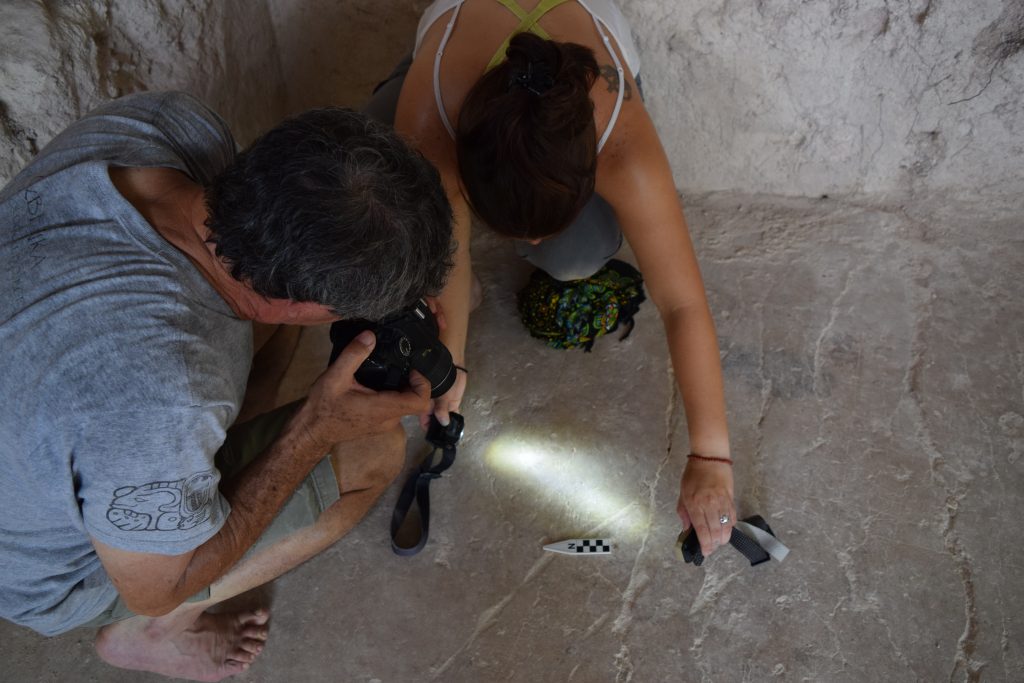
After I conducted my preliminary excavations in 2015, Dr. Awe suggested I apply for external research grants. As a result, I was awarded the National Geographic Society (NGS) Young Explorers Grant in the spring of 2016, an accomplishment that has led to publication and created a solid relationship between myself and NGS, with whom I continue to work to this day.
The NGS research grant led me to conduct my own research project under the auspices of BVAR in the summer of 2016. This experience was a turning point for me in my professional career as it gave me the skills to form an international research plan, obtain funding, manage field operations, teach students, and write/submit a technical report.
As a non-traditional and first-generation student, I have found Dr. Awe’s mentorship to be invaluable as I navigate my academic career. Dr. Awe’s dedication to his students is unwavering, and I think my undergraduate achievements (and those of many others) are a testament to his determination to see his students succeed.
How did those experiences shape the decisions you’ve since made about your future?
My experience working with Dr. Awe and the BVAR project opened many doors for me. After graduating from NAU, I pursued a Master’s degree in archaeology at University College London (UCL).
Where are you now, and what are you doing?
Currently, I am a PhD student at the UCL Institute of Archaeology in London. My schedule is mostly taken up by reading, writing, and various analyses, but on my days off, you can catch me at one of the nearby museums, castles, parks, or Facetiming my partner and our two dogs!
I am an editor for a peer-reviewed journal published by the UCL Institute of Archaeology, Papers from the Institute of Archaeology.
I am still studying Maya monumental architecture, but another project that I have been working on focuses on ancient graffiti, which we have documented in many of my excavations at Xunantunich. Dr. Awe and I are collaborating on this research project with colleagues in Poland and Denmark, which will result in publication and presentation at the 2023 Society for American Archaeology meeting.
Can you describe your fieldwork in more detail?
My research on the BVAR project has always focused on understanding changes in monumental architecture/construction through time and urbanism throughout the Belize Valley. Since 2017, I have excavated at the site of Xunantunich, the focus area for my doctoral research. Xunantunich is a Classic Maya site that has been archaeologically investigated since the late 1800s. Despite the extent of its interest, the site lacks a complete occupation chronology from an archaeological standpoint.
One of our goals is to find and collect materials that help fill in the gaps in that chronology. These items include ceramic materials; charcoal; and botanical, human, and faunal remains. While excavating at Xunantunich this past summer, we documented some architecture and cultural materials which, based on their style and context, provide more information about an earlier occupation at the site than previously thought, which is very exciting. Next field season (summer 2023) we plan to explore these early contexts of occupation further with the help of our field school students, including all those who join us from NAU!
What do you hope to do after earning your PhD?
My primary goal is to stay in academia and teach at a community college.
I would like to continue collaborating with BVAR and the Belize Institute of Archaeology to improve public outreach and engagement with archaeological projects throughout the country via creating interactive digital models of buildings, artifacts, and excavations.
Did you enjoy your time at NAU?
I really enjoyed my time at NAU. I learned so much about archaeology in theory and practice, which provided me with a solid foundation of knowledge within the discipline. The lessons I learned at NAU provide the basis for how I operate as a professional archaeologist today.
Professor Awe uses advanced technology called LiDAR to map ancient Mayan cities. Read more about Professor Awe’s research and the stories he has discovered.

